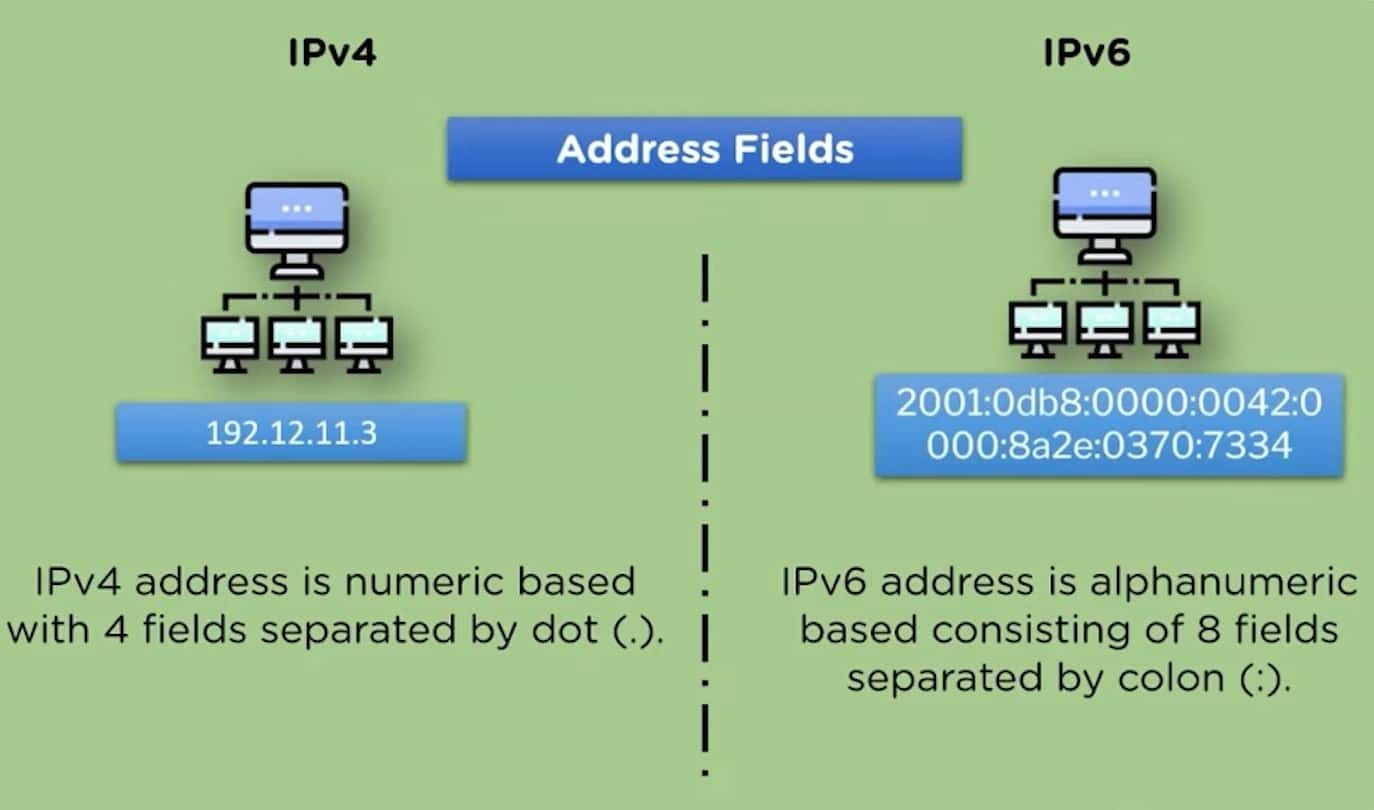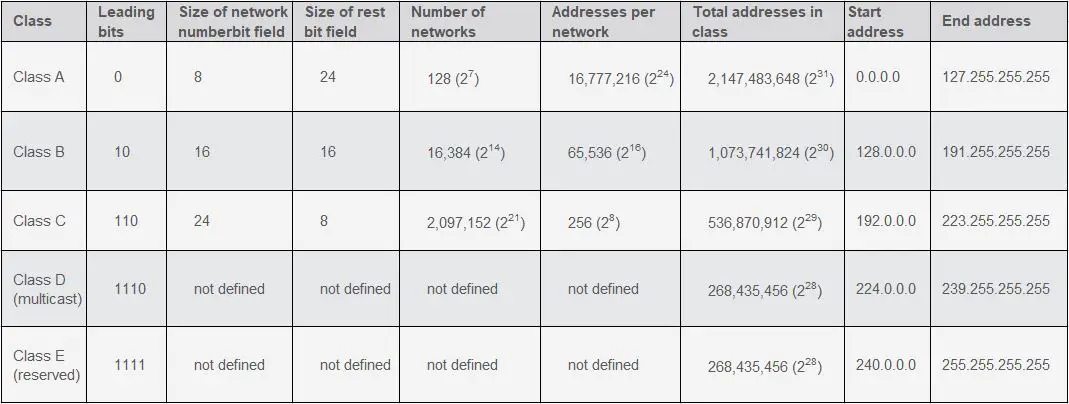If you are a computer user, you must know about IP address, a unique address that uses every network device to communicate with each other. But did you know there are two versions of IP that currently coexist in the global Internet: IP version 4 (IPv4) and IP version 6 (IPv6). Let’s discuss more details about IPv4 and IPv6. What are the differences between IPv4 and IPv6 and will find out which is better over others? Let’s start.
What is an IP address?
An IP address is a short form for an Internet Protocol address is a unique identifying number for every network device. And each device is connected to a computer network that uses the Internet Protocol for communication. IP addresses are binary numbers, but they are usually stored in text files and displayed in human-readable notations, such as 151.101.65.121 (for IPv4), and 2001:4860:4860::8844 (for IPv6). In the OSI model, IP address is considered part of the network layer that is traditionally used in conjunction with a higher-level protocol, most notably TCP.
IP address pools into 5 different classes—A, B, C, D and E. you can find more details from the below chart.
Definition of IPv4
Internet Protocol Version 4 (IPv4) is the fourth revision of the IP and a widely used protocol in data communication over different kinds of networks. IPv4 is a connectionless protocol used in packet-switched layer networks, such as Ethernet. It provides a logical connection between network devices by providing identification for each device. An IPv4 address is a 32- bit binary value, which can be displayed as four decimal digits. (Via Wiki)
An example of an IPv4 address is 68.149.3.230.
Features of IPv4
- Connectionless Protocol
- Allow creating a simple virtual communication layer over diversified devices
- It requires less memory, and ease of remembering addresses
- Already supported protocol by millions of devices
- Offers video libraries and conferences
Definition of IPv6
IPv6 – is a new (sixth) version of the Internet Protocol, IPv6 is the successor to Internet Protocol Version 4 (IPv4) which is going to replace the current fourth version IPv4. It was designed as an evolutionary upgrade to the Internet Protocol and will coexist with the older IPv4 for some time. IPv6 is intended to allow the Internet to grow steadily, both in terms of the number of hosts connected and the total amount of data traffic transmitted.
IPv6 addresses have a size of 128 bits. Therefore, IPv6 has a vastly enlarged address space compared to IPv4. IPv6 address is represented as eight groups of four hexadecimal digits, each group representing 16 bits (two octets, a group sometimes also called a hextet). The groups are separated by colons (:).
An example of an IPv6 address is: 2001:0db8:85a3:0000:0000:8a2e:0370:7334
Features of IPv6
- Hierarchical addressing and routing infrastructure
- Stateful and Stateless configuration
- Support for quality of service (QoS)
- An ideal protocol for neighboring node interaction
What are the differences between IPv4 and IPv6?
- IPv4 and IPv6 both refer to IP address standards that define how an IP address is allocated and what it will be. Here the numbers i.e. 4 and 6, indicate the version number.
- IPv4 is the older version that’s run out of IP addresses to allocate and IPv6 is the new version that was released to meet the growing demand for IP addresses.
- IPv4 has IP addresses that are 32-bit numerical values written in the decimal system while IPv6 has 128-bits written in the hexadecimal system.
- The Internet Protocol version 6 (IPv6) is more advanced and can provide an infinite number of addresses.
- IPv4 uses four 1 byte decimal numbers, separated by a dot (.) and each part contains a number ranging from o to 255 (i.e. 192.168.1.1). while IPv6 uses hexadecimal numbers that are separated by colons and contain 8 parts having 4 numbers each. You may see alphabets there (A-F). But they are actually numbers (A=10 B=11 C=12 D=13 E=14 F=15) (i.e. fe80::d4a8:6435:d2d8:d9f3b11). For better understand refer the image below.
- IP version 4 (IPv4) generates 4.29 x 10
9unique network addresses which is insufficient in quantity. IP version 6 (IPv6) produces 3.4 x 1038addresses and is a scalable and flexible solution to the current problem. - IPv6 is used by less than 1% of the networks, while IPv4 is still in use by the remaining 99%.
- IPv6 is better suited to mobile networks than IPv4.
Here is the exact difference between the IPv4 and the IPv6 version
| IPv4 | IPv6 | |
| Address | 32 bits (4 bytes) | 128 bits (16 bytes) |
| Example : 12:34:56:78 | Example: 1234:5678:9abc:def0:1234:5678:9abc:def0 | |
| Packet size | 576 bytes required, fragmentation optional | 1280 bytes required without fragmentation |
| Packet fragmentation | Routers and sending hosts | Sending hosts only |
| Packet header | Does not identify packet flow for QoS handling | Contains Flow Label field that specifies packet flow for QoS handling |
| Includes a checksum | Does not include a checksum | |
| Includes options | Extension headers used for optional data | |
| up to 40 bytes | ||
| DNS records | Address (A) records, | Address (AAAA) records, |
| maps hostnames | maps hostnames | |
| Pointer (PTR) records, | Pointer (PTR) records, | |
| IN-ADDR.ARPA DNS domain | IP6.ARPA DNS domain | |
| Address configuration | Manual or via DHCP | Stateless address autoconfiguration (SLAAC) using Internet Control Message Protocol version 6 (ICMPv6) or DHCPv6 |
| IP to MAC resolution | broadcast ARP | Multicast Neighbor Solicitation |
| Local subnet group management | Internet Group Management Protocol (IGMP) | Multicast Listener Discovery (MLD) |
| Broadcast | Yes | No |
| Multicast | Yes | Yes |
| IPSec | optional, external | required |
So which one is better IPv4 or IPv6? Since IPv4 is now used 99% of devices and it’s been here for a long time. But when it comes to security, IPv6 holds the stakes. Almost every big website like Google, Facebook, YouTube, Wikipedia..etc all are now using IPv6 and it’s the feature of the network industry. Did you find this post helpful? let us know on the comments below,
Also read
- SSD vs HDD Speed and Performance Comparison
- Fix Error One or More Network Protocols are Missing on This Computer
- Best Paid and Free VPN for Windows 10 (Up to 82% discount + 3 months free)
- Free VPN and Paid VPN, what is the real difference between them?
- Solved: Driver Unloaded Without Cancelling Pending Operations
- Discord Screen Share Audio Not Working [Ultimate solutions to fix it)



